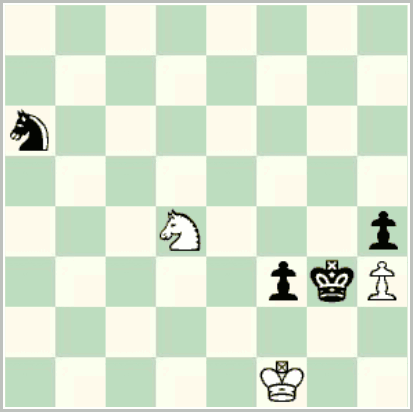J. J. Walsh has scorebooks covering all of his games, going back to the late 1940’s, and in the collection is included the full score of the game from the last two posts. White was Barney O’Sullivan, and the event was the Leinster Championship.
Most of the game was unremarkable: O’Sullivan tamely lost a pawn in the opening, and everything simplified quickly to a knight ending. It could have been a routine win, but instead turned into something much more interesting right at the end. Winding back a few moves from the widely publicised ending, the position below was reached after White’s 60th move.

1. … ?
This ending is within range of the 7-man Lomonosov tablebases (subscription required), which show that Black has the unique winning move 1. … Nb4!!.
With the various solutions to the puzzle given in the earlier posts to hand, the reason is clear enough: from either b4 or c5 the knight is poised to come to d3, but from b4 the knight additionally covers d5, cutting out the drawing line given by van Perlo: after 2. Nf5+ Kxh3 3. Kf2 Kg4 4. Ne3+ Kf4 White has no useful checks.
One exclamation mark or two? Without the benefit of the solution to the later puzzle, it seems an exceptionally difficult puzzle, so the double exclamation seems justified.
